We’re vast
1. At 9.98 million square kilometres, Canada is the world’s second largest country.
2. It has the world’s longest coastline, 202,080 kilometres of shores washed by three oceans.
3. We have big mountains—at 5,959 metres, the Yukon’s Mount Logan is the second highest peak in North America.
4. We have big lakes, too. If you don’t count the Caspian Sea, with its oceanic basin and partially saline water, Canada is home to the world’s biggest freshwater lake, Lake Superior, and six others in the top 15: Huron, Great Bear, Great Slave, Erie, Winnipeg and Ontario.
5. In fact, Canada has more lakes than any other country—three million—and 20 per cent of the world’s fresh water.
We also like big things
6. Canada has a quirky fondness for oversized roadside attractions, including the world’s largest dinosaur (Drumheller, Alta.), hockey stick (Duncan, B.C.), Canada goose (Wawa, Ont.), nickel (Sudbury, Ont.), axe (Nackawic, N.B.) and perogy (Glendon, Alta.). In fact, the Big Nickel in Sudbury is the world’s largest coin, measuring nine metres in diameter.

Prime Minister Justin Trudeau.
We’re nice
7. We’re known for being polite, but are we really? Well, we do apologize more than anyone—a Queen’s University study found that 90 per cent of Canadians aged 18 to 25 will actually apologize if someone bumps into them.
8. We’re grateful, too. In fact, in Vancouver, visitors are often surprised to learn that it’s a thing for passengers to thank bus driver when exiting the bus.
9. Even our government is polite, mostly. If you need to reach the feds, you can just dial direct, 1-800-O-Canada—that’s 1-800-622-6232—and someone will talk to you. It won’t be Justin Trudeau, though. Sorry!
10-13 Compassion is even the law of the land: We introduced universal health care in 1966 (earlier in some provinces); banned the death penalty in 1976; legalized same sex marriage in 2005; and allowed assisted death in 2016.
We’re dope
14. Or at least we’ll be able to smoke it legally when Canada decriminalizes possession of marijuana in 2018.

Polar bears, we got ’em. More than 15,000 of the world’s approximately 25,000 polar bears call Canada home.
We’ve got the best wildlife
All those forests, plains and vast sweeps of tundra are simply teaming with wildlife. Here are just a few of the critters you’ll spot in Canada.
15. Polar bears, we got ’em. More than 15,000 of the world’s approximately 25,000 polar bears call Canada home. In Churchill, Man., visitors can walk with polar bears on very, very carefully guided expeditions. Plus Canada has grizzlies, brown bears and black bears, as well as the rare white subspecies, the Kermode or spirit bear.
16. Whales, we’ve got those, too. Blue whales, the world’s largest animals (and, with a cry of 188 decibels, the loudest), ply the waters off the East Coast, while in the West, humpbacks, grays and orcas keep whale-watching tours busy. Our waters are also teeming with dolphins and porpoises.
17. Canada is also home to North America’s largest land animal, the wood bison, which can stand up to two metres in height and weigh more than a tonne. Wood bison roam the northern plains of Alberta, Manitoba, the Yukon and the Northwest Territories; the world’s largest free-roaming bison herd can be found in Wood Buffalo National Park.
18. Then there’s the moose, the largest member of the deer family, whose distinctive antlers and humped back adorn road signs from coast to coast warning drivers of what will happen if they hit one, which happens an average of 247 times a year. Hint: The moose is more likely to walk away than you are.
19. Scared of snakes? Then maybe avoid Manitoba’s Narcisse Wildlife Management Area in spring, where some 50,000 snakes—the biggest concentration in the world—hibernate each winter, coming to life en slithery masse on the first warm days of the year.
20. Canada offers nesting space to millions of migratory birds, including Canada geese, pelicans, blue herons and bald eagles, which are especially plentiful along the salmon-spawning grounds of the West Coast. Meanwhile, Canada’s north is the summer home of the world’s most intrepid winged traveller, the Arctic tern, which travels more than 40,000 kilometres to winter in Antarctica—and back again—each year.
21. We love our rodents too, at least some of them. In fact, our biggest rodent, the beaver, is our national animal and commemorated on the nickel.
We invented practical things
22. The most famous of Canada’s inventions was the treatment for diabetes. In 1921, a team at the University of Toronto led by Canadian physician Dr. Frederick Banting discovered the hormone insulin and found that, when injected, it lowered high blood glucose levels to normal. That discovery has saved countless lives since then. They were awarded the Nobel Prize for their work in 1923.
And that’s not all the life-changing things Canadians have invented, including:
23. The lightbulb. In 1874 Canadians Henry Woodward and Mathew Evans built and patented a prototype light bulb that evolved into the ones we use today. Their lamps featured carbon rods held between electrodes in glass cylinders filled with nitrogen. When they couldn’t make a commercial go of their invention, Woodward and Evans sold the patent to one Thomas Edison—and the rest is history.
24. The telephone. Alexander Graham Bell was born in Scotland and immigrated as a young man to Canada, where he studied voice, taught the deaf and worked on his harmonic telegraph. He was splitting his time between Brantford, Ont., and Boston University when he invented what would be known as the telephone. It was patented in 1876. Just over a century later, the BlackBerry Smartphone was developed at Research In Motion’s offices in Waterloo, Ont.
25. The Robertson screw. One day back around the turn of the last century, a Canadian salesman named Peter Lymburner Robertson was demonstrating some tools when a straight-bladed screwdriver slipped from its slot and cut his hand. That inspired him to invent the safer square-head screw we know as the Robertson screw, patented in 1909.
26. The 20th century fashion silhouette. A Canadian invented the Wonderbra, the pushup underwire brassiere. Although it gained global fame after it was trademarked in the U.S. in 1955, it was invented and trademarked 16 years earlier in Canada by Moses (Moe) Nadler, founder of the Canadian Lady Corset Company.
We play cool games
27-32. Yes, we’re a hockey-loving nation, but that’s not the only game in town. Canadians invented five-pin bowling, table hockey, basketball and Trivial Pursuit. And when it comes to hockey, Canada is not only the home of the Great One, Wayne Gretzky, but we invented the goalie mask and instant replay (for CBC’s Hockey Night in Canada in 1955).
But we really, really love our hockey
33. We have the world’s most colourful hockey commentator, the splendiforously besuited Don Cherry.
34. Ontario-born Wayne Gretzky has the career record for the most regular season points in the NHL, 2,857. He also has more assists, 1,963, than the next player has points.
35. Born in Floral, Sask., the legendary Gordie Howe played NHL hockey from the age of 18 until he retired in 1980 at the age of 52. That’s the longest top tier career in any professional sport. And it’s why he’s known as Mr. Hockey.
36. The World’s Longest Hockey Game was played in February 2015 just outside Edmonton. A fundraiser for the Cross Cancer Institute, it has been held five times since 2003 when it broke the 82-hour record. The 2015 event raised more than $1 million and lasted 250 hours. That’s 11 full days of play.

Canadian comedian and actress Catherine O’Hara.
Funny folks
37-46. In most of Canada, they say, there are two seasons: winter, and road work. Ba-dum ching. If you can’t laugh about the lousy weather, it’ll make you cry. Maybe that’s why we have so many funny people. Canada has produced some of the most hilarious comedians around, including Jim Carrey, John Candy, Eugene Levy, Catherine O’Hara, Dan Aykroyd, Seth Rogen, Mike Myers, Leslie Nielsen, Mary Walsh and Rick Mercer.
Santa, he’s our guy
47. Santa Claus may not have been born in Canada, but just before Christmas in 2010, he officially became a Canadian citizen. Jason Kenney, who was the federal immigration minister at the time, noted that, “As a Canadian citizen living in Canada’s North, he can re-enter Canada freely once his trip around the world is complete.” Even better? If you write to Santa Claus at North Pole, H0H 0H0, Canada, volunteer elves at Canada Post will reply to every letter addressed to the jolly old elf.
We have our eyes on the stars
48. Since the end of the Second World War, Canada has quietly been working on a series of launchers, rockets and satellites and established the Canadian Space Agency in 1990. Its most famous contribution is the Canadarm, also known as the Shuttle Remote Manipulator System. Between its debut on the Space Shuttle Columbia in 1981 and its retirement in 2011, the robotic arm deployed, captured and repaired satellites, maintained equipment, moved cargo and kept astronauts from floating off into space.
49-51. Our astronauts have stars in their eyes. Among them: Roberta Bondar, Canada’s first woman in space (1992); Marc Garneau, former president of the Canadian Space Agency, current federal transport minister and veteran of three space flights (1984, 1996, 2000); and Chris Hadfield, veteran of multiple space fights, Chief Astronaut for the Canadian Space Agency from 1996 to 2000 and, for 25 missions, CapCom, the voice of mission control to astronauts in orbit.
52. But the stars aren’t just for the astronauts. Canada has an impressive number of Dark Sky Preserves, areas where the environment is protected to enhance the visibility of the night sky mainly by reducing light pollution. In fact, the world’s first International Dark Sky Preserve was established in 2007 at the Mont Megantic Observatory in Quebec.

Canadian singer Michael Bublé.
We write the songs
53-67. For a country with such a small population, Canada produces an astonishing number of the world’s great hit makers. Credit, perhaps, is due to the Canadian content requirements imposed by the Canadian Radio-television and Telecommunications Commission (CRTC) since 1968, insisting a certain percentage of music on the air be created by Canadian artists. Or maybe we just know how to rock. Just a handful of the diverse international musical stars Canada has produced include: Paul Anka, Justin Bieber, Alanis Morrisette, Joni Mitchell, Neil Young, Celine Dion, Shania Twain, Bryan Adams, Michael Bublé, k.d. lang, Gordon Lightfoot, Avril Lavigne, Sarah McLachlan, Drake, Leonard Cohen and Anne Murray.
We write the books, too
68-82. Canadians know how to tell a story, starting with Lucy Maud Montgomery, who created one of the most enduring fictional heroines of all time, Anne of Green Gables. Just a small handful of our great writers includes: Carol Shields, Robertson Davies, Michael Ondaatje, Yann Martel, Alice Munro, Louise Penny, Mordecai Richler, George Bowering, Camilla Gibb and Madeleine Thien.
Not only does Canada produce exceptional writers, it produces visionaries like Douglas Coupland, who defined a generation and created a contemporary lexicon (Generation X), William Gibson, who created the genre of cyberpunk (Neuromancer), and Margaret Atwood, who saw the terrifying possibilities of a dystopian future that’s starting look an awful lot like the present (The Handmaid’s Tale). And don’t forget Marshall McLuhan, who not only coined the terms “global village” and “the medium is the message,” but also predicted the World Wide Web three decades before it was invented (Understanding Media).
We’re poets and we know it
83-87. There are strange things done in the midnight sun, and sometimes they even rhyme. Canada is as much a land of poets as it is of lumberjacks and cattle wranglers. Among the best: Robert W. Service, whose The Cremation of Sam McGee defined the north for so many, as well as Al Purdy, Irving Layton and John McCrae.
We invented the best hangover cure ever
130. Canada has a booming craft beer, wine and spirits industry, but our best boozy gift to the world was the Bloody Caesar. It is a tragedy that it is virtually unknown past our borders, for this is truly the world’s greatest hangover cure, and a tasty libation unto itself. A Bloody Mary made with Clamato juice instead of tomato, it was invented in Calgary in 1969 and has reigned as this nation’s favourite cocktail ever since.

A.A. Milne and Winnie-the-Pooh.
We gave the world Winnie-the-Pooh
131. In 1914, a bear cub named Winnipeg was exported from Canada to the London Zoo, where a little boy named Christopher Robin Milne fell in love with him. That affection inspired his father, A.A. Milne to write the famous stories about Winnie-the-Pooh.
We might have given the world James Bond, too
132. The author Ian Fleming once wrote of his famous creation, “James Bond is a highly romanticized version of a true spy. The real thing is . . . William Stephenson.” Stephenson was a Canadian soldier, airman, businessman, inventor and spymaster, best known by his Second World War code name of Intrepid.
We do winter better than anyone
There is a lot of winter in Canada. Months and months of short dark days, cold nights, icy roads and, in most of the country, piles of snow. What to do? Well, put on your toque and snow pants and make the most of it.
133. We love our winter sports: skiing, skating, snowboarding, hockey, curling. It’s no wonder then that Canada holds the record for the most gold medals ever won at the Winter Olympics, 14, at the 2010 Vancouver Games.
134. The most exciting winter sport of all, heli-skiing, started in the Bugaboo Mountains of British Columbia. There’s nothing like a helicopter for getting you to the deepest, most pristine powder in the world.
135. We invented the snowmobile. One-horse open sleighs are fine for Christmas carols, but when you need to get somewhere, you need a vehicle with power. French-Canadian inventor Joseph-Armand Bombardier patented his B7 snowmobile in 1937; then, in 1959, he introduced the ultralight version known as the Ski-Doo.
136. We’re home to the world’s longest ice rink, the Rideau Canal in Ottawa, where locals skate to work, stopping for the fried pastry known as Beaver Tails along the way.
137. For a few frosty months each year, you can sleep in an ice hotel at the Hôtel de Glace in Quebec, an excellent place to enjoy the local specialty of ice cider.
Only in Canada, you say? Pity
Add to your bucket list these five uniquely Canadian experiences:
138. On nice days, you can do yoga for free on Parliament Hill.
139. You can paddle past icebergs in the waters off Newfoundland.
140. You can watch the Northern Lights—Canada is the best place in the world to do so, especially in the northern parts of the prairie provinces and the territories.
141. You can hike, bike, skate or ski the world’s longest recreational trail, the 21,500-kilometre-long Great Trail, previously known as the Trans Canada Trail. It’s easy to access, too—80 per cent of Canadians live within 30 minutes of the trail.
142. You can walk on one of the world’s most accessible glaciers, the Athabasca Glacier, along the spectacular 232-kilometre-long Icefields Parkway in Alberta.
We have dinosaurs
143. We’re no Jurassic Park, but there are plenty of dinosaur and fossil remains in Canada. Alberta especially has been the site of major finds such as Albertosaurus, a large carnivore related to T. rex, as well as the duck-billed Edmontosaurus. The Royal Tyrrell Museum in Drumheller has 40 dinosaur skeletons and thousands of fossils on display. Many of them no doubt hail from the Burgess Shale in B.C., where one of the world’s first complex marine systems is preserved in stone.
We have the better Falls
144. Niagara Falls actually comprises three waterfalls—Horseshoe, American and Bridal Veil—that straddle the border between Ontario and New York. Two (American and Bridal Veil) are on the American side of the Niagara Gorge, while Horseshoe Falls is on the Canadian side. Horseshoe Falls alone is the most powerful waterfall in North America. It’s also the most spectacular, which is why so many Americans cross the Rainbow Bridge to check it out.
We talk Canuck
145. For the most part, our language is the result of English tradition and American influence, but we do have some uniquely Canadian expressions that have strangers scratching their heads and going, huh? Among them: two-four, as in a 24-can case of beer; serviette (napkin); parkade (parking garage); toque or tuque (that knitted cap you wear in winter); mickey (flask of booze); double double (coffee with two creams, two sugars); chesterfield (sofa); runners (sneakers); keener (a brown-noser); skookum (good); loonie/toonie ($1 and $2 coins respectively); pop (soda); klick (kilometres); zed (zee, the final letter of the alphabet).
We have two official languages
146. Canada as a nation was founded by both the French and the English, and each adds a distinct flavour to the national character. Most of us study the other’s language for at least part of our educations, and we know the two languages well enough to muddle along with the national anthem at hockey games. By law, certain things must be presented in both languages: labels on packaging, for instance, or anything produced by the federal government. The fact that we may have the world’s longest public service announcements as a result just makes us a more patient and tolerant people.
We love a man (or woman) in red serge
147. The Royal Canadian Mounted Police was founded in 1920, a merger of the Royal North-West Mounted Police and the Dominion Police. The Mounties are a national police force, as well as a provincial and territorial one, known by their dress uniforms of red serge and brown hats. Sadly, our police don’t wear them when busting drug ops or catching speeding drivers; nor do they ride their horses when they do so. If you want to catch Mounties on horseback, you’ll have to check out the RCMP Musical Ride. Performed by a full troop of 32 riders and their horses doing intricate drills and routines in perfect timing, it travels to 50 communities across Canada each year between May and October, raising thousands of dollars for local charities. The most famous fictional Mountie was Dudley Do-Right, the dim-witted but conscientious cartoon character introduced on the Rocky and Bullwinkle Show, though Paull Gross’s charismatic character on due South is a close second.
We’re likeable!
148. Canadian cities consistently rate among the world’s highest in terms of livability, with Vancouver, Toronto and Calgary all in the top 10 of The Economist’s 2016 rankings.
149. Not just a great place to build a home and store your kayak, Canada is also a good place to do business. One of the best in fact. According to Forbes, it’s because of our lower corporate tax rate, excellent infrastructure and well-educated populace. Besides, the fact that we have a more conservative banking system than many countries do not only helped us weather the economic downturn of 2008, it also made us a solid financial choice.
We’re proud of the Maple Leaf (but in a modest, Canadian way)
150. You can tell when Canada is in the house. A sea of red and white with the distinctive maple leaf fluttering everywhere. The murmur of “sorry” and “thank you.” Servings of poutine and Bloody Caesars. Cheers when the Toronto Maple Leafs score or, depending what part of Canada you’re in, when they don’t. Every once in a while, a rousing chorus of O Canada.
We’re proud to stand on guard for the true north, strong and free. Here’s to another 150 great years.
Source: Westcoast Home & Design









Back to Our Blog